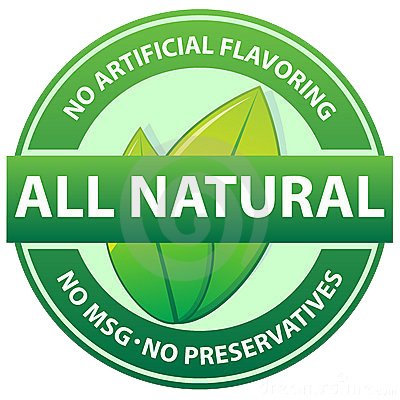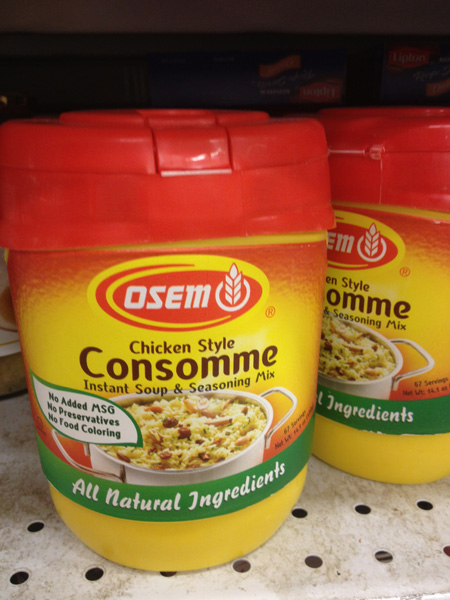 Day after day we are bombarded with advertisements for food that tell us how healthy something is for us. We walk into a grocery store and see the front of boxes that tell us how natural something is, or how healthy. But while some words on a label actually have a governmental meaning (Organic for instance). Others don’t quite tell the entire story.
Day after day we are bombarded with advertisements for food that tell us how healthy something is for us. We walk into a grocery store and see the front of boxes that tell us how natural something is, or how healthy. But while some words on a label actually have a governmental meaning (Organic for instance). Others don’t quite tell the entire story.
My rule of thumb is that if a food package is telling me how healthy it is, I need to verify that for myself. Healthy foods at least used to be seen by the eye. It was our dairy and our produce and our meats. Even there however, we need to take a closer look. But processed foods are easier to decipher (at least we have labels).
Take the word “Natural” for example. What does that say to us? Something Natural should be good for us right? While the U.S. government does require that a label saying 100% natural cannot have artificial ingredients in it, that doesn’t mean that its good for us. Natural does not mean healthy.
Take this product for example. I found it on the shelf at my local grocery store in the Kosher Food Section.

Notice the words "All Natural" Ingredients
Notice a few things. It claims:
- “All Natural Ingredients”
- No Added MSG
- No Preservatives
- No Food Coloring.
Looks good right? But looks can be deceiving. Notice first that it says “Chicken Style”. That means that there is no chicken in the product. It’s supposed to taste like chicken, but that’s subjective. It’s definitely not going to taste like my bone broths. Nutrition wise, its 15 calories in 1 Tablespoon and contains 890 milligrams of salt. Woah. That’s a lot of salt. If we look at the ingredient list (found on the GoodGuide), you will find the following:
salt, cornstarch, sugar, maltodextrin, yeast extract, palm oil, spices (celery, parsley, garlic, black pepper, mace, rosemary, dehydrated onions) and natural flavors.
Remembering that ingredients are listed from the largest amount to the smallest, we see that this is primarily (by weight) made up of salt. So this consomme, is basically salt. The rest of the ingredients by weight are:
- Cornstarch – Obviously from corn. 85% of the commodity corn grown in the U.S. is genetically modified. You can bet this cornstarch is.
- Sugar – Recall that most sugar comes from sugar beets and 90% of the sugar beets in the U.S. are genetically modified. So chances are that unless a product specifically says Cane Sugar, its gm sugar.
- Maltodextrin is a carbohydrate that is commonly used as a sweetener. It’s commonly produced from rice, corn or potato starch. If it’s from corn, it’s probably from genetically modified corn. Regardless, ingredients 3 and 4 by weight in this product are sweeteners. Think a home prepared bone broth has any sugars? Mine sure doesn’t.
- Yeast Extract – Remember how the label said “No Added MSG”. Well guess what Yeast Extract contains? Yep, glutamic acid, the same stuff as MSG. Yeast Extract is basically a cheaper version of MSG. All of the issues, at half the cost.
Glutamic Acid is a non-essential amino acid. It means we don’t need it. Its used as a flavor enhancer in many processed foods. Many people exhibit sensitivities to it. Laboratory animal experiments have produced brain lesions and obesity to name a few. It’s not something I want in my food by any name.
- Palm Oil – This is a saturated fat, one of the tropical oils. Its become a substitute in many processed foods because of the bans on trans fats. I don’t have a problem with mono-saturated fats, so for me, this oil is fine. But this is the first ingredient (6th in weight) that I don’t have an issue with.
- The spices are pretty much self-explanatory, but lets look at that last ingredient a little more closely.
- Natural Flavors – Two words which have a specific meaning (if you take the word specific to mean that the government is defining it. In the United States, this means
The term natural flavor or natural flavoring means the essential oil, oleoresin, essence or extractive, protein hydrolysate, distillate, or any product of roasting, heating or enzymolysis, which contains the flavoring constituents derived from a spice, fruit or fruit juice, vegetable or vegetable juice, edible yeast, herb, bark, bud, root, leaf or similar plant material, meat, seafood, poultry, eggs, dairy products, or fermentation products thereof, whose significant function in food is flavoring rather than nutritional. Natural flavors include the natural essence or extractives obtained from plants listed in Secs. 182.10, 182.20, 182.40, and 182.50 and part 184 of this chapter, and the substances listed in Sec. 172.510 of this chapter.
So basically, this means, the items which make up “Natural Ingredients” may have come from a plant, or animal, but we don’t know what it is. Something to think about for vegetarians. Of course you could email or call the manufacturer to find out. Hopefully they will tell you.
Even if I bought processed foods, this is not something I would buy.
Have a label you want decoded? Send me pictures of the front and back of the item and if possible list the ingredients.
Links
- Osem Chicken Style Natural Consomme – Good Guide
- What is Maltodextrin? (wiseGeek)
- Is Palm Oil Good For You? (health.gather.com)
- Side Effects of MSG (Advanced Health Plan)
- Just What is Natural Flavoring? (Today)
- GMO Health Risks
Related articles
- The Dangers of MSG (tinaspharm.wordpress.com)
- Decoding Labels: Better Than Bouillon (foodrenegade.com)
- Identifying Sources of GMO’s in your Food (healthyfoodnaturally.com)
- The Natural Food Label: As Mislabeled as ever (Sabrinas Crossing)
- MSG: A Very Tasty Poison (arealfoodlover.wordpress.com)

Great info! Sometimes ‘natural flavors’ is used to disguise MSG as an ingredient as well. If a product I like has ‘natural flavors’ listed, I always email them and try to figure out exactly what their natural flavor is!
Reading labels is a lot harder then just seeing how many calories something is. It really requires sleuthing now.